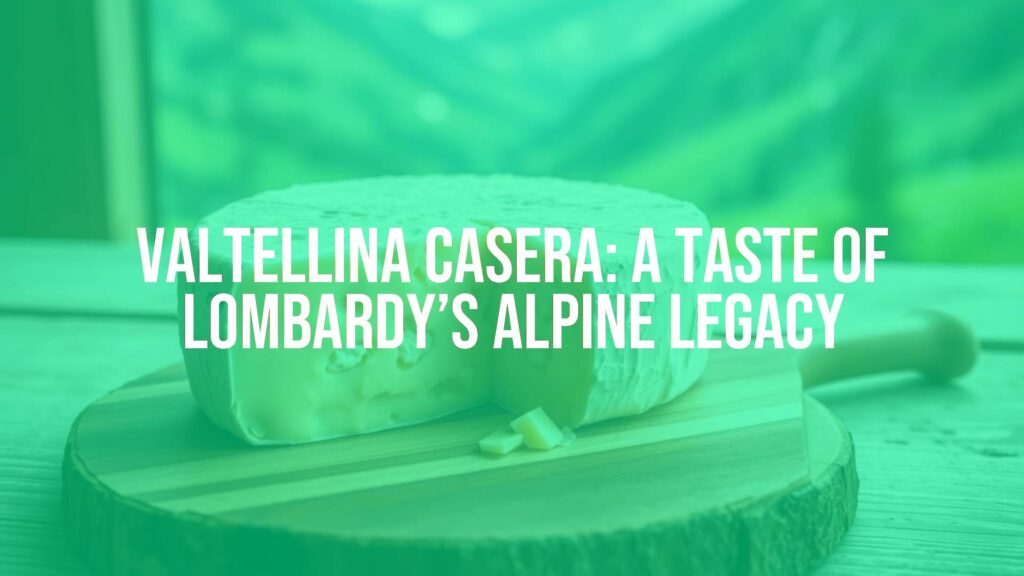Exploring Valtellina Casera
Valtellina Casera is a semi-hard, cow’s milk cheese from the alpine region of Valtellina in northern Lombardy, Italy. Known for its supple texture and nuanced flavors, this regional specialty embodies the landscape, history, and culinary tradition of its mountainous birthplace. Valtellina Casera possesses an official Protected Designation of Origin (PDO) status, ensuring stringent standards for its production and securing its place in the pantheon of authentic Italian cheeses.
Distinguishing Characteristics
Valtellina Casera distinguishes itself with a pale straw yellow color and a thin, natural rind. Its paste is elastic and smooth when young, developing small eyes dispersed throughout. The taste profile shifts with aging—mild and milky in its youth, becoming nutty and aromatic as it matures. Most commonly, wheels are aged between 70 days and several months, with longer aging leading to firmer texture and complex flavors, making the cheese suitable both for table enjoyment and culinary applications.
History and Origins
The origins of Valtellina Casera trace back to the late 16th century, rooted in the valley’s tradition of alpine cheesemaking. ‘Casera’ refers to the local cellars where cheeses were historically stored and matured. Crafted by cooperatives of mountain farmers, the cheese originally provided a means to preserve the nutritional abundance of fresh milk, ensuring sustenance through harsh alpine winters. Over time, its popularity spread throughout Lombardy, becoming a pillar of the local gastronomic identity.
Traditional Production Methods
Valtellina Casera is made exclusively from partially skimmed cow’s milk, sourced from breeds grazing on high-altitude pastures rich in wild herbs. The milk is gently heated and curdled with natural rennet before the curds are cut, drained, and pressed into characteristic cylindrical molds. After dry salting, wheels are left to mature in cool cellars—the famed casere—where conditions nurture the cheese’s signature aroma and character.
Cultural Significance in Lombardy
Valtellina Casera is deeply entwined with the life and traditions of the Valtellina valley. It’s a cherished staple at family tables, rural festivals, and celebrated local dishes. Its protected designation not only highlights the cheese’s economic and cultural role but also supports the preservation of alpine agriculture and traditional practices vital to the regional identity.
Culinary Uses and Pairings
The versatility of Valtellina Casera makes it a beloved ingredient across northern Italy. Perhaps most famously, it stars in pizzoccheri, a rustic pasta dish of buckwheat noodles tossed with the cheese, greens, and potatoes. It melts beautifully, lending richness to casseroles, gratins, and savory pies. Sliced thin, it pairs marvelously with Valtellina’s cured meats, rye breads, and the local Nebbiolo-based wines such as Sassella or Inferno. Older wheels are often shaved over polenta or added to hearty soups and stews, where their deep flavor enhances every bite.
Variations and Aging
While Valtellina Casera PDO covers a specific profile, local producers may vary the aging period, resulting in subtle changes in taste and texture. Younger cheeses are creamy and mellow; those matured longer acquire a more pronounced, savory complexity. Artisanal variations might emphasize notes of hay, alpine flowers, or pasture herbs, reflecting the microclimate and feeding patterns of the herds.
Serving Suggestions
To savor Valtellina Casera at its best, allow it to come to room temperature before serving. It stands out on a cheese board alongside walnuts, fresh apples, and rustic jams. For a traditional touch, enjoy it in the company of local polenta or as part of shared mountain meals. As a cook’s ingredient, its gentle melt and robust flavor make it ideal for comfort food classics or creative modern dishes inspired by Lombardy’s culinary heritage.

